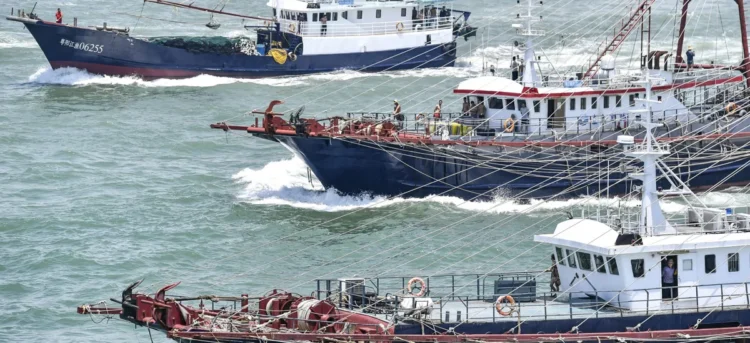The element of ensuring conformity to anti money laundering (AML) standards has become more important than ever in the large world of international shipping where the goods go across seas on a daily basis. Vessel screening is considered to be a vital part of anti money laundering compliance in maritime trade which is essential for the protection against financial crimes, sanctions violations, and other illegal activity as well.
Understanding Vessel Screening
When it comes to the transportation of commodities, it is valued trillions of dollars per annum made possible by the global shipping industry which is the vital foundation of international trade at the same time. All of this brings also serious concerns such as laundering of money, evading sanctions and other financial crimes as well. Additionally, vessel screening is considered to be an essential procedure to reduce such risks and guarantee that the marine operations comply with international standards specifically when it comes to Anti Money Laundering compliance.
What is Vessel Screening in AML Compliance?
Vessel screening can be described as comparing maritime vessels and their related entities such as owners, operators, and cargo at the global level to the global sanctions lists, watchlists, and databases. Approaches of such nature do help in the identification of potential links that lead to criminal activities such as laundering of money, financing for terrorism, and sanctions evasion.
In the context of anti-money laundering, vessel screening extends beyond simply identifying sanctioned ships as it also checks vessel ownership, trading routes, and operations in order to find red flags that may suggest compliance issues respectively.
Why Vessel Screening is Essential in AML
The maritime industry is highly susceptible to financial crimes due to its nature, following are the reason why it is essential:
Complex Ownership Structures:
There are many vessels that operate under such complex ownership structures which frequently involve shell corporations in tax havens as well.
High-Value Transactions:
When it comes to high value transactions, shipping is an appealing target for money launderers as the large sums of money are already involved.
Global Operations: The obligation of monitoring ships actions across many jurisdictions is difficult but necessary at the same time.
Key Components of Vessel Screening
To reflect the importance of vessel screening, it might be a complex procedure that further intended to guarantee adherence to anti money laundering laws and stop illegal activity in the shipping sector. Following are the essential elements of successful vessel screening:
- Screening for Sanctions
Screening for sanction is supposed to entail the comparison of international sanctions lists which is kept up to date by the regulatory organizations such as those of vessels, their owners, operators, and related entities and much more. Top regulatory bodies which require this are as follow:
Office of Foreign Assets Control (OFAC) (United States)
European Union Sanctions List
United Nations Security Council
The major reason for finding vessels is that it might be connected to sanctioned nations, businesses, or people.
Real-World Example: There was a shipping business back in 2021 which was subjected to severe fines by regulatory bodies for operating a ship that was tangentially associated with a North Korean sanctioned organization.
- Tracking AML Vessels
Tracking anti money laundering is one of the main components of tracking real-time vessel movement and this advanced tracking technologies are used by compliance teams to:
- Keep an eye on the ship routes and spot any deviations or questionable activity.
- Recognize if there is any manipulation of the Automatic Identification System (AIS), such as when ships turn off their tracking devices to avoid detection.
- Tends to indicate vessels that frequently stop in or operate in high risk areas.
Real life Example: there was a ship which was frequently getting turned off its AIS when it was close to Libya region while navigating the Mediterranean Sea, which raised so much concerns about compliance.
- Analysis of Ownership and Beneficial Ownership
The process of determining the actual ownership of the vessel is considered essential for spotting connections to prohibited or high risk organizations. There are numerous criminals out there who conceal themselves behind intricate ownership arrangements, such as offshore accounts and shell corporations etc.
- The analysis of beneficial ownership ensures the clean operation of the vessel in itself.
- Tracing ownership strata across different regions frequently becomes super necessary for the cross border cooperation as well.
Real life Example: After the detailed investigation, the fact got disclosed about the ownership as it was a Liberian registered vessel linked to an Iranian business on the OFAC sanctions list and it was flagged.
Streamline Your Vessel Screening with AML Watcher
AML Watcher simplifies the complexities of vessel screening by providing access to real-time sanctions data, advanced tracking capabilities, and ownership analysis tools. With its comprehensive screening solution, AML Watcher empowers compliance teams to detect high-risk entities, monitor suspicious vessel movements, and ensure adherence to global AML and sanctions regulations.







